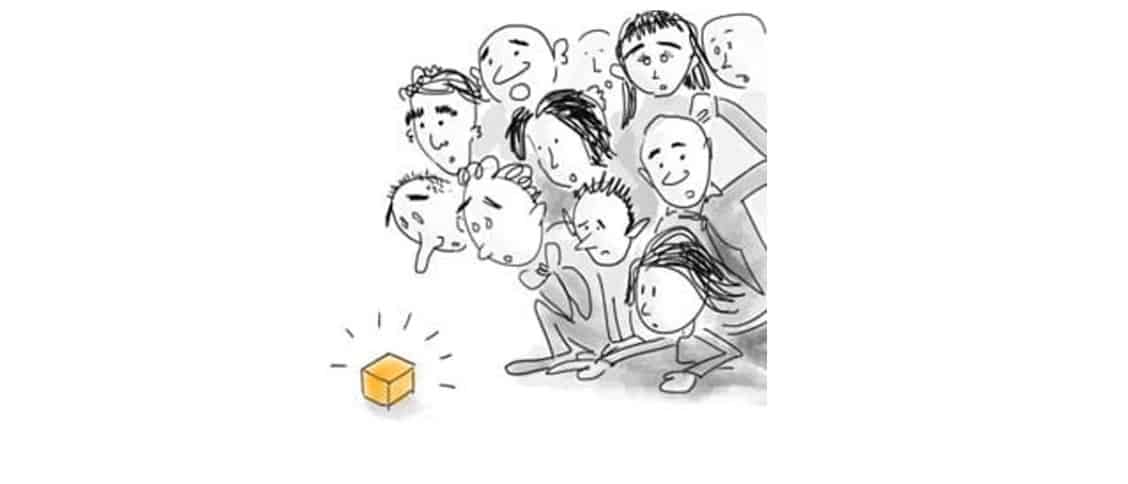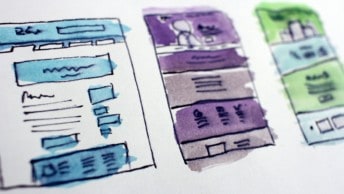Laser-focused, innovative, patient, authentic. These are all qualities we look for in our leaders. For ambitious UXers, leading a team, a company, or even the field, is probably in your sights.
So what qualities do you need to become a UX leader? And what defines UX leadership?
To find the answers, we asked our UXperts to weigh in on what UX leadership means to them. The good news is, there are types and pathways to become a leader.
Make sure you read our second instalment, featuring practical advice from our experts on how you can become a UX leader.
Cory Lebson
Cory Lebson (@corylebson), author of The UX Careers Handbook (CRC Press, 2016), has been a user experience consultant for over 20 years. He is the Principal and Owner of Lebsontech LLC, a successful user experience consulting firm he established in 1997. Lebsontech is focused on user research and evaluation, user experience strategy, UX training, and mentoring. Cory also speaks frequently on topics related to UX career development, user experience, user research, information architecture, and accessibility.
What do you think makes a great UX leader?
A great UX leader realises that there are many pathways to great leadership. In my book, I talk about four kinds of UX leadership: workplace leadership, UX organisational leadership, mentorship and thought leadership.
Workplace leadership is what someone may typically think of when they think of UX leadership: leading a UX team in the workplace, making good UX decisions and ultimately producing successful products. While I started down this pathway myself, I chose a number of years ago to become a freelancer and instead channelled my UX leadership energy into UX organisational leadership, helping a local chapter (UXPA DC) and later UXPA international on a voluntary basis.
A UX practitioner who doesn’t lead a team can also be a workplace leader by mentoring others and helping them to improve their skills. Mentorship doesn’t just have to take place within the workplace and can involve giving advice and support to others outside of one specific company.
Finally, thought leadership involves promoting new ideas and information to UX professionals and advocating for UX to those who aren’t already embedded in the profession. Thought leadership can take many forms – writing personal blogs, publishing articles in established electronic periodicals, giving talks and providing training in person, and doing podcasts online, for example.
How can people lead great UX teams?
Sticking with the theme of leadership outside of the workplace, leaders leading a UX Meetup or local, national or international UX professional organisation should not just do everything themselves. Instead, they should create a proper infrastructure to support events and other activities and should pull in other like-minded UXers to help them.
Not only does this make volunteer leadership more enjoyable and provide a basis for more resources to scale upwards towards greater events and activities, but it also spreads the “wealth” of volunteer leadership – that is, provides opportunities for exposure to more people.
Jodie Moule
Jodie Moule is Co-founder & CEO of Symplicit, a Customer Led Innovation firm based in Australia that has focused on research, strategy and design services since 2003. Following a Design Thinking philosophy that was grounded in the psychology and industrial design backgrounds of the founders; Jodie believes that understanding human behaviour allows you to change the customer experience, and that change happens through great design. Follow Jodie: @jodiemoule @thecookapp @symplicit
What do you think makes a great UX leader?
What makes a great UX leader is what makes any other leader great, really. To my mind, this is a mix of being good at what you do, and also being a great people person. To lead a group of people, you have to have a certain ‘gravitas’ about you, and that to me is the intangible aspect of leaders that gives them the X-factor.
In a practical sense, I think someone who isn’t afraid to jump in and help their team get shit done, and get their hands dirty–guiding by example–is someone I think is a great leader. That would be someone not tied up in the ‘ego’ of merely being a leader for the title’s sake. In my opinion, too many people place too much value in job titles and job descriptions. Those people are not leaders.
To me, a leader really thinks about the future of the space they work within, and is constantly looking at connecting the dots on where the industry is headed, pushing the boundaries beyond the standard approaches, with a clear vision of where their team needs to head–whether that direction is the popular belief or not–they trust their gut and go for it!
How can people lead great UX teams?
When it comes to leading great teams, I think ‘like attracts like’. If you build something that is great, others will want to be part of that. I also think if you are just setting out to ‘build a team’ you might find that hard. If you are setting out to achieve a mission rather than just ‘building a team’–that’s how you end up building and leading a great team. For example, we always set out to do great work, the rest kinda followed. Be yourself and enjoy the ride! Model great qualities, be passionate and engaged in what you do. Others will see that and want to learn from that, and most importantly–they’ll want to be part of it.
James Noble
James has helped re-define, create and evolve user experiences for over two decades. Founding one of Asia Pacific’s most innovative experience agencies Carter Digital. An active UX industry advisor, mentor, radio presenter, public speaker and serves on a number creative juries globally including Australia’s first UX & Digital Craft representative for Cannes Lion in 2016. Follow James on LinkedIn, Medium, or Twitter.
What do you think makes a great UX leader?
Empathy. A regularly refuted topic in UX articles. In my humble opinion, this is where UX began. Being in a position of leadership is easy. Being a competent leader, whom people want to listen to is much harder to achieve. If you can embody what you represent and embrace it, people will follow.
Confidence. Cultivate your craft before your passion. Regardless of profession, UX or otherwise. Be sure of yourself and understand the entire suite of approaches available to you: Learn them, break the rules, and remake and refine it. The knowledge to define and tweak the process to ensure the best possible outcome with certainty is invaluable.
Focus. Empower yourself with the knowledge of process from books, speakers and fellow leaders both in and out of the user experience industry. The solutions you are trying to create can be similar but never identical, forever adding to your mental library. People are your focus, not the medium by which a solution is presented.
Awareness. Know your team. Understand each personality, role, drive and focus of every member of your team. Harness their individual drive to empower to push themselves past that imaginary ceiling.
Inspire. Communicate clearly, concisely and emotively. An engaged team wants to learn, and the goal is to make them better than you. Share ALL your knowledge, thought processes and thinking.
How can people lead great UX teams?
No matter how long you’ve been in an industry, never be too senior to muck in and get your hands dirty. People often let their title get in the way of just getting things done, and done well.
Understanding an audience, defining research questions, analysing results, creating personas, user journeys and flows is never linear. People are individuals. Understand and nurture each need, want and goal to harness your team’s drive and success. Inspire, engage and communicate with each individual in a way in which best fits their personality. Turn your understanding and knowledge of the UX process to motivate the team, including yourself. You’ll effectively set expectations, create a roadmap to understanding your audience, needs, wants and goals. Listen. Respect. Consider. Act. Repeat.
Dan Szuc
Dan (@dszuc) is a Principal Consultant at Apogee, as well as the co-founder of the UX Hong Kong conference. He has been involved in the UX field for 25 years, and has been based in Hong Kong for 20 years. Dan has lectured about usability, user-centred design, and user experience globally. He co-wrote The Usability Kit, an implementation guide providing best practices and guidelines for usability teams, and he holds a Bachelor of Science in Information Management from Melbourne University in Australia.
What do you think makes a great UX leader?
I suggest we can consider what makes a great leader. Or we can consider that UX is a word in front of leadership that helps describe a type of leadership that does not exist today. Or maybe it’s about what kind of leader do we need in order to have the type of places we wish to work in going forward?
In the spirit of integrated and connected thinking, the answer probably lies in a hybrid of answers to the questions above. I consider a great leader to be a human leader and a person who does not put process above care. A leader who thinks about the needs of the team and a selflessness to get to great outcomes together. A great leader is also someone who can help a team understand and get clarity on a narrative that everyone can get behind and to work together in respectful ways.
How can people lead great UX teams?
By learning from other people who know how to build a sense of team spirit and know how to help people be at their best. To create work environments that are not just about the delivery of work, but to also provide spaces for people to stop, slow down, reflect and talk about their work and to identify gaps in their own capabilities to assist them to be better on a weekly basis. To give people the necessary artefacts to help structure their routines at work and to have a connected understanding or sense of purpose as to why they come to work in the first place. To know that learning never stops and that we need ways to constantly mature and to have people who can play explicit roles to help us to do that, namely–facilitator, mentor, connector and custodian.
David Travis
Dr David Travis (@userfocus) holds a BSc and a PhD in Psychology and he is a Chartered Psychologist. He has worked in the fields of human factors, usability and user experience since 1989 and has published two books on usability. David helps both large firms and start ups connect with their customers and bring business ideas to market.
What do you think makes a great UX leader?
I think there are certain characteristics that all good leaders share, whether they work in the field of user experience or in something else. For example, a quick Google search turned up this article. It describes “22 Qualities That Make a Great Leader” such as decisiveness, communication and accountability, and I can see all of them applying to people in a UX leadership role. So I think to really answer this question, we need to address what, if anything, is different about UX leadership?
I want to avoid talking about technical skills here, because although our UX leader needs to know the process to follow to create a good user experience, they won’t be doing the work day-to-day. Technical skills like field research, usability testing, information architecture, interaction design, visual design, technical writing and prototyping are the table stakes—but they are not sufficient to lead a user experience team.
When I mull over this, the one characteristic that I’ve seen in great UX leaders is “Vision”: the ability to describe a future state for the product and to have the soft skills to motivate the team behind this shared vision. As user experience professionals we’re lucky to work in a field where we really can make the world a better place. This is something we do every day by ensuring we’re developing the right kind of products and services for people, avoiding waste and making people’s lives simpler. Articulating this vision to the team is the single most important thing we can do to encourage people to do their best work.
Read part two of the series: Finding Your Path to UX Leadership.
What do you think makes for excellent leadership in UX? Let us know in the forums or leave a comment.











Thanks! A lot of practical information.
Waiting the part 2!
Nice piece Luke, makes for a good read.